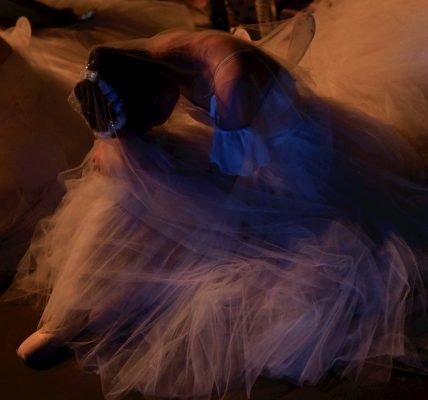Ballet is synonymous with grace and beauty, epitomized by the dancer’s pointe shoes. These seemingly delicate slippers are central to ballet’s allure, suggesting ease and gracefulness while masking the strenuous rigor required by this art form. Beneath the idyllic image of ballerinas in pink tutus and male dancers in tights lies the reality of a demanding physical activity that tests the limits of the human body.
Dancing on pointe is particularly challenging for ballet dancers, creating the illusion of a body supported solely by the tips of the toes, leading to various injuries. Blisters, sprains, fractures, and bruises are among the numerous injuries resulting from repetitive and extreme movements.
This problem inspired the creation of “P-rouette,” a 3D-printed ballet pointe shoe, conceived by Hadar Neeman, a graduate of the Bezalel Academy of Arts and Design. Witnessing a friend’s battered feet, Neeman envisioned using 3D printing to develop more comfortable footwear for ballet dancers.
Custom-Fitted to the Dancer’s Foot Morphology
3D printing has already demonstrated its benefits in podiatry, with startups like France’s Scientifeet and Eden 3D leveraging this technology to create custom-fitted orthopedic insoles. Neeman capitalized on this customization capability to produce tailor-made ballet pointe shoes.
Traditionally, pointe shoes are crafted using time-consuming manual techniques. The “box” at the tip of the shoe, which supports the dancer’s weight, requires several manufacturing steps, involving shaping multiple layers of canvas and dipping them in glue, followed by reinforcement with three rigid soles made of leather and cardboard.
Neeman’s approach starts with digitizing the dancer’s foot using a mobile app. This scan allows the designer to model a sole and a lattice-shaped box that fits the individual’s foot morphology perfectly, accommodating various shapes like Greek, square, or Egyptian feet.
Enhanced Comfort and Durability
The upper part of the shoe (the vamp) is integrated during the printing process, held between two printed layers, eliminating the need for assembly, glue, or stitching. The 3D-printed materials for the sole and box are made from an elastomeric polymer. The shoe’s body is crafted by a cobbler using satin fabric and cotton for the inner lining.
According to Neeman, these 3D-printed shoes are not only more comfortable but also significantly more durable than traditional pointe shoes. While conventional shoes wear out after 10 to 20 hours of dancing, the lifespan of these innovative shoes is purportedly three times longer, a critical factor considering the budgets of major ballet schools.
For example, the Paris Opera reportedly spends €350,000 annually on footwear. It remains to be seen whether these cutting-edge shoes will reach commercial production. A similar solution, The Pointeeshoe, was recognized last June with the 3D-Pioneers-Challenge award.




